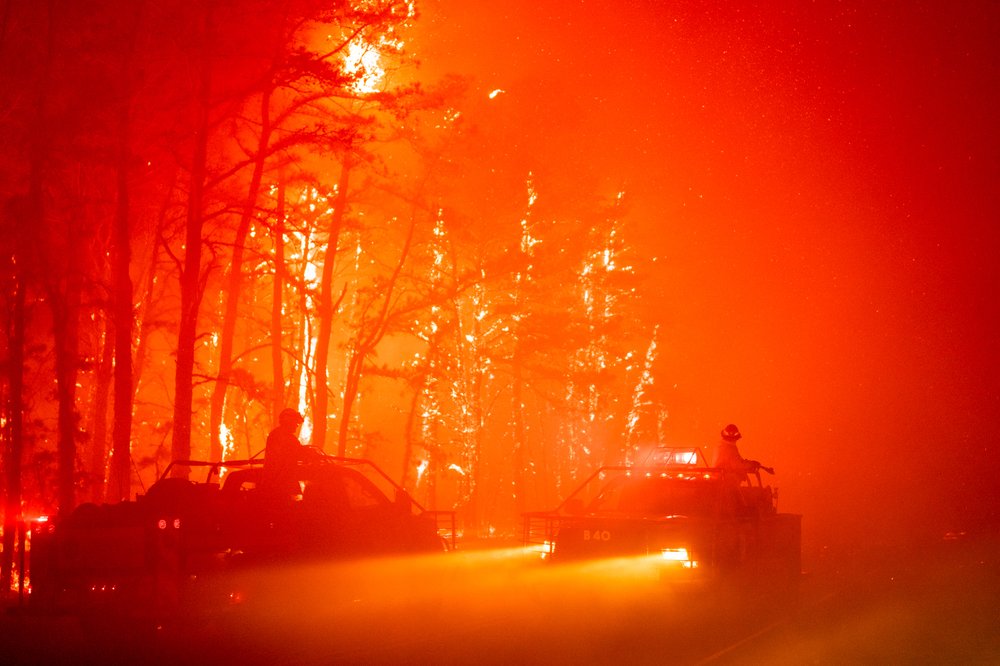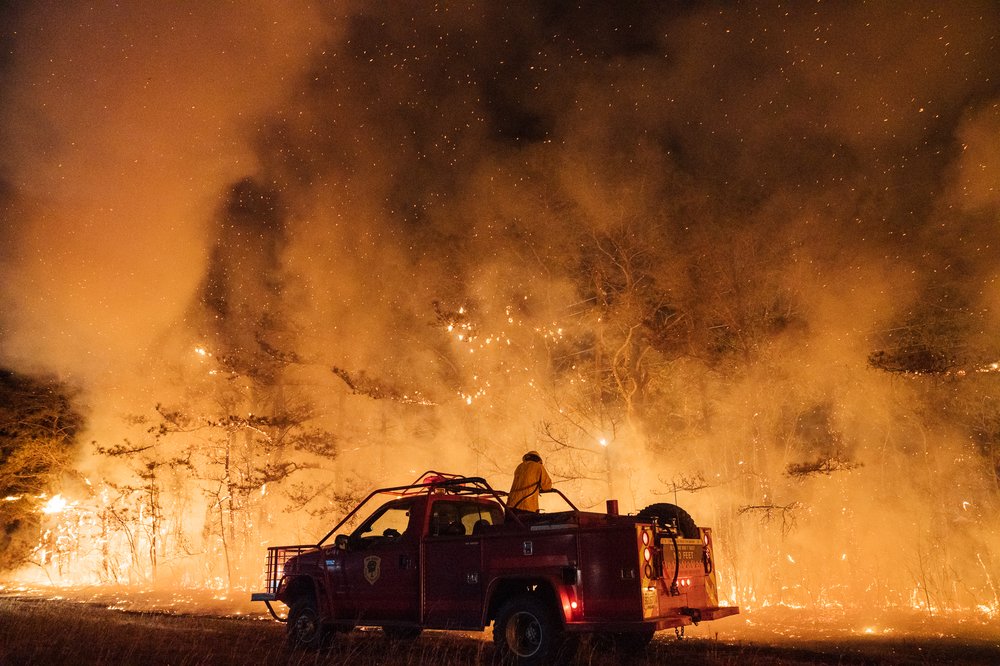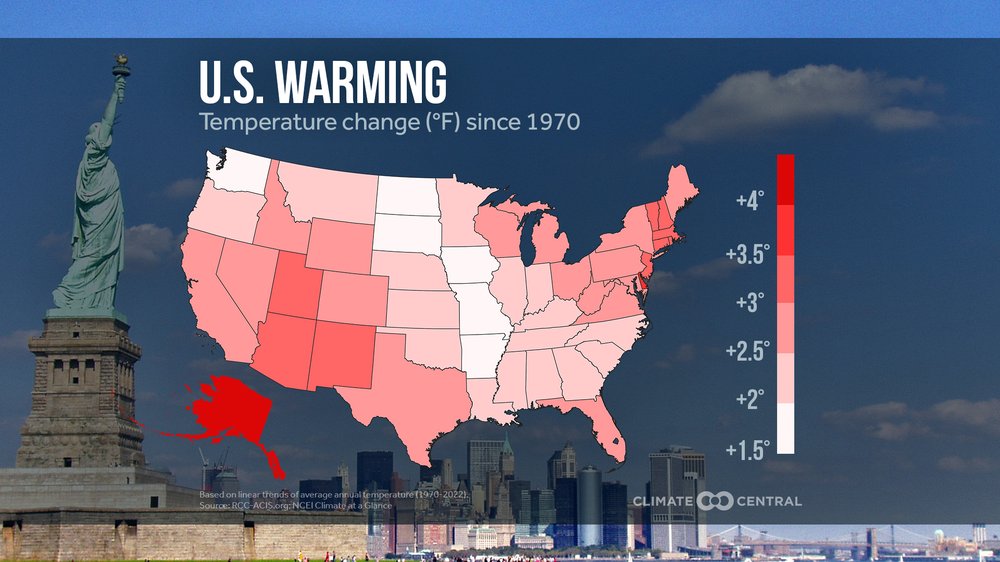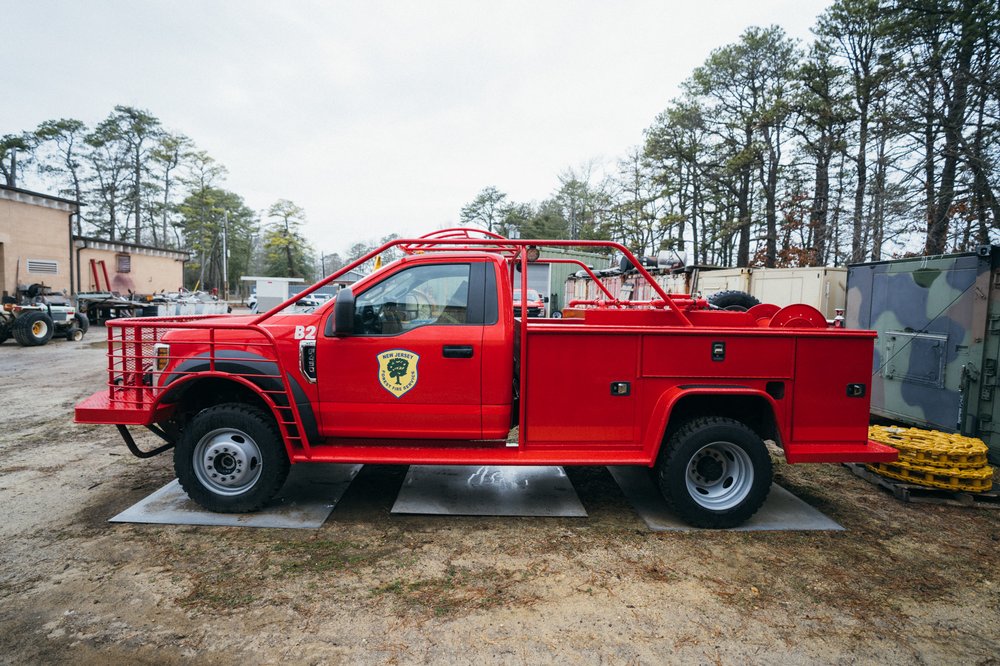Climate change is making NJ and NY into wildfire hotspots
May 24, 2023, 7 a.m.
A new nationwide analysis shows that the number of days of fire risk has been growing swiftly in parts of the Northeast over the last 50 years.

The chances of wildfires in New York and New Jersey are increasing.
In a new nationwide analysis of weather conditions over the past 50 years, the research nonprofit Climate Central found that the annual number of days that have a high risk of fire has risen by 10 days in northern New Jersey and coastal New York, which includes the city and Long Island.
The report pulled its details from the National Centers for Environmental Information, which tracks across hundreds of weather stations and climate divisions. Among areas in the eastern half of the U.S., northern New Jersey and coastal New York recorded some of the largest jumps in fire weather.
High-risk fire weather days are characterized by low humidity, hotter temperatures and stronger winds – the perfect ingredients for wildfires in these densely populated states where woodlands frequently intermix with human areas. Traditional forests cover about 40% of New Jersey.
New York and New Jersey also stand in the top 20 states with the most total homes in the wildland-urban interface — the technical term for human-adjacent areas most prone to burn and put people in harm’s way. New York was seventh, while New Jersey was 17th.
The pattern falls in line with the experiences of New Jersey Forest Service Fire Chief Greg McLaughlin. In the distant past, he had always sent his crew for most of the summer to help out with forest fires in other states. But last year, his whole crew had too many local fires to handle to spare any firefighters out of state.
“We're seeing fires that are happening outside of that typical, traditional window of March 15 to May 15,” said McLaughlin, who is also a biologist. “We're seeing this expansion of the fire season to becoming longer and happening at different times.”
This deadly combination makes it easier to start a fire and harder to extinguish such incidents.

“Fire weather is important because it is what causes extreme wildfire behavior,” said Kaitlyn Trudeau, senior research associate at Climate Central, which is based in Princeton. “They can make them much more dangerous and burn for a lot longer.”
New Jersey is outpacing last year’s fire season on multiple fronts. This year already, 670 wildfires have burned over 8,000 acres, according to the New Jersey Department of Environmental Protection. That’s more than halfway to last year’s total of 1,175 wildfires and nearly 13,000 acres burned (nearly 90% were the result of a single fire caused by an illegal and unattended campfire that took five months to extinguish).
Six of this year’s fires are classified as major in New Jersey, compared to only two major fires in 2022.
“It gets hectic whether it's sleeping with one eye open or not sleeping at all,” McLaughlin said. “It’s not like we just put the fire out and walk away and go home."
These fires can rage for months and can increase the likelihood of more fires. McLaughlin said that even when it rains, it’s not always the end. Some fires burn underground through the root system.
Historical weather data and McLaughlin’s experience indicate that the conditions that make it ripe for wildfires are intensifying and happening more frequently. One of the biggest factors is the increase in temperatures as a result of global warming, which has made evening temperatures warmer, too. Overall, the U.S. has warmed about 2.5 degrees Fahrenheit since 1970, according to Climate Central, but the jump is slightly higher across New Jersey and New York.

Another factor is decreased humidity, which makes the environment drier. McLaughlin said last summer humidity levels hit below 25% in June and July, when they’re usually between 50%-70% and sometimes even reaching to 90%.
“When you have low humidity, the vegetation ripens quicker,” McLaughlin said, adding these conditions allow fire to spread more quickly. “It's more susceptible to fire and takes less energy to get that vegetation to ignite.”
Preventative measures, such as controlled burns to reduce flammable debris, also become harder when the forest floor is hot and dry enough to be the perfect kindle for a stray spark. Prescribed fire is difficult to control with extreme heat.
“If we have fewer days a year where we can do prescribed burning, theoretically, we are going to need to burn within a shorter time period, which could cause more increased smoking in areas,” Trudeau said. “Just an increase in these conditions could mean more of these prescribed burns might break out into wildfires.”
A raging fire season can also be connected to a disappointing snow season. New Jersey State climatologist David Robinson said that snow cover is needed to compact the debris on the forest floor.
“If you don’t pack in the debris, then it lets air in the debris to stoke the fires,” Robinson said. “In the future there might be more spring fires because of the lack of previous winter snowfall.”

The New Jersey Forest Fire Service fabricates all of their own wildland fire engines at their Research and Development shop in Mays Landing. Pictured here is the newest truck in the fleet, a Type 6 engine with a 250-gallon water tank.
While wildfires are most often associated with the hot, dry West, the Northeast has a larger threat of high-density populations living near or in forested areas. In Climate Central’s analysis of 2020 data, around 9 million homes in the Northeast existed in the wildland-urban interface This total was more than double the number in the Southwest, the climate region with the most annual fire weather days — and 55% more than the West, the region with second most fire weather days.
Human activity plus increasing fire-prone areas creates an equation for more wildfire incidents to occur, even during seasons when fires are unusual. Felled power lines, discarded cigarettes and sparks from train rails can become a blaze source. Humans cause about 85% of wildfires in the U.S., according to the National Park Service.
“This is just another hazardous threat exacerbated by human behavior,” Robinson said. “Humans are already involved in the fire scenario with climate change making the ground more vulnerable to fire – it can only potentially get worse.”
Gowanus Canal kelp farm celebrates its first commercial harvest Bill to make Big Oil pay $3 billion annually for NY’s climate costs gains support